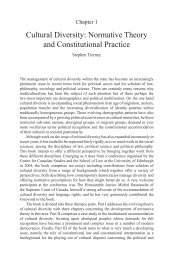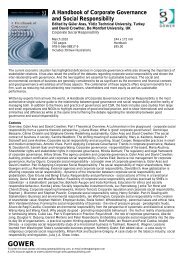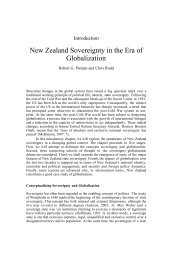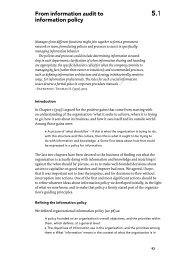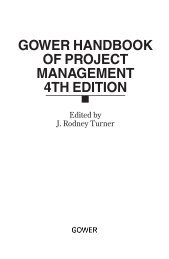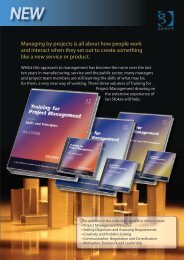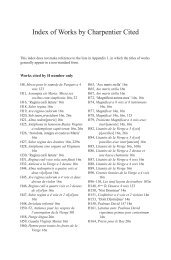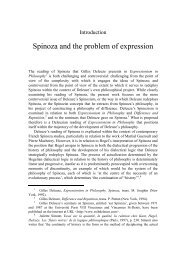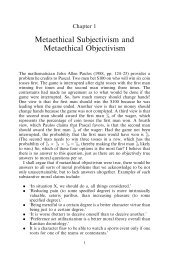The Project Risk Maturity Model
The Project Risk Maturity Model
The Project Risk Maturity Model
Create successful ePaper yourself
Turn your PDF publications into a flip-book with our unique Google optimized e-Paper software.
T h e P r o j e c t R i s k M a t u r i t y M o d e l<br />
13<br />
100%<br />
Level 4<br />
75%<br />
Level 3<br />
50%<br />
Level 2<br />
25%<br />
Level 1<br />
Stakeholders <strong>Risk</strong> <strong>Risk</strong> <strong>Risk</strong> <strong>Project</strong> Culture<br />
Identification Analysis Responses Management<br />
Figure 1.6<br />
<strong>Project</strong> RMM assessment results for <strong>Project</strong> B<br />
<strong>Project</strong> B – An Example of Level 1 <strong>Risk</strong> Management Capability<br />
<strong>Project</strong> B was a defence equipment procurement contract, and was both larger and more<br />
complex than <strong>Project</strong> A. Figure 1.6 shows an assessment of the Prime Contractor’s risk<br />
management capability towards the latter stages of development and early stages of<br />
production. A fixed price contract for these two phases had been won in a competitive<br />
tender.<br />
<strong>The</strong> government organisation that was the Prime Contractor’s customer had required<br />
a risk register to be included in the proposal. However, the submitted risk register was, in<br />
essence, a subtle part of the contractor’s sales pitch. <strong>The</strong>re was an emphasis on risks that<br />
competitors were more exposed to and a use of warm words and optimistic assessments<br />
to downplay any other risks that the customer could be assumed to have identified.<br />
For the first two years after contract placement, there had been no further use of risk<br />
management. However, important assumptions about the maturity of existing designs<br />
had turned out to be unfounded, and as a consequence, timescales had started to slip at<br />
an accelerating rate.<br />
At this point, there was a change in company ownership. This resulted in at least three<br />
initiatives to make more formal use of a risk management process. First, the new finance<br />
director introduced a requirement for contingencies to be justified with calculations<br />
based on a risk register. In some circumstances, this might have prompted improved<br />
practice. However, the accepted basis for these calculations was simplistic. Moreover, the<br />
project team could quantify the board’s expectations of project contingency. In practice,<br />
the project manager contrived a list of plausible risks with estimates to match these<br />
expectations.<br />
In a second initiative, another director hired an external consultant to conduct a<br />
quantitative schedule analysis for completing the development phase. However, when the<br />
results of this analysis were published, management at all levels considered the forecasts



